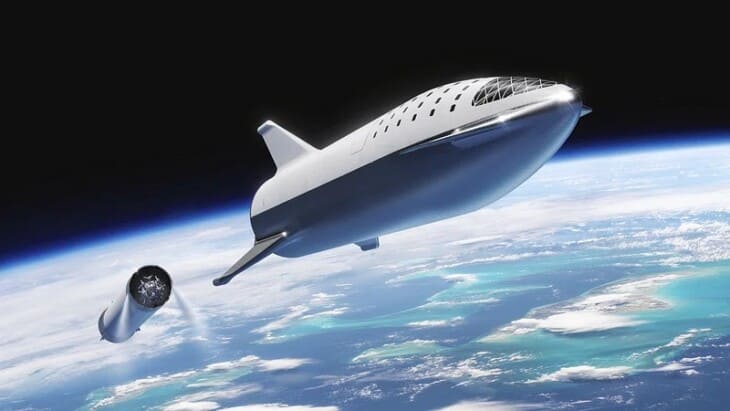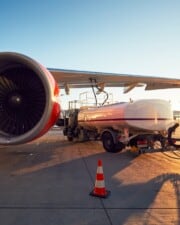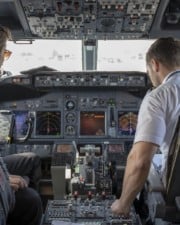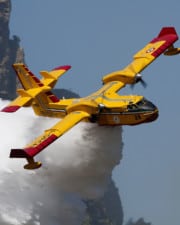Since Neil Armstrong first landed on the Moon back in 1969, science fiction has often depicted a future where humans not only set foot on the Moon and other extraterrestrial bodies, but actively travel to them. This is a perfect example of what’s called space tourism, and thanks to recent flights that have taken place, it’s no longer just a far-fetched idea out of science fiction. But what exactly is space tourism, and what does it mean for the future of the aviation industry?
Simply put, space tourism is exactly as it sounds: tourism flights that go to space. They are principally commercial in nature, as opposed to the heavily scientific/research based flights done by professional astronauts. Though it has existed for several decades, it has increased in popularity throughout the 2020s.
What is Space Tourism?
Space tourism is the term given to any spaceflight that is done for recreation and/or leisure reasons by a for-profit operator.
The main aim of space tourism is to allow those who are not professional astronauts and/or scientists to experience what spaceflight is all about.
The concept of space tourism is by no means new – the idea of people going for vacations to space, the moon and/or other planets has been around long before the Space Race kicked off – but has become more of a reality in recent years thanks to companies like Virgin Galactic, SpaceX and Blue Origin.
Currently, space tourism is very much in its infancy, with participants able to experience weightlessness and see views of our planet that very few people ever have done, for a matter of minutes before returning to Earth.
Types of Space Tourism
At present, there are currently four main types of space tourism. These are:
Suborbital
By far the most common type of space tourism (at least for the moment), suborbital space tourism refers to any space tourism flight that leaves Earth’s atmosphere, generally agreed at 62 miles (100 kilometers) above sea level.
These flights typically last no more than a few hours and see the participants experience weightlessness for only a few minutes, caused by exerting them to g-forces similar to those experienced by astronauts during a rocket launch before descending back to Earth where they experience weightlessness.
During this period of weightlessness, participants are often able to unstrap themselves from their seats to fully experience weightlessness before strapping themselves back in for reentry.
Due to the sheer altitude they fly to, participants are able to see the Earth much like how astronauts do from outer space, albeit with Earth looking much larger due to them being closer to it.
Orbital
Orbital space tourism on the other hand, is any space tourism flight that leaves Earth’s atmosphere and brings participants into Earth’s orbit.
Where suborbital space tourism allows participants to experience space for only a few minutes, orbital space tourism allows participants to experience it for much longer, ranging from a few hours to potentially even days, as it makes several orbits around Earth.
Very much still in its infancy, orbital space tourism could involve much more than just experiencing weightlessness – it could one day see participants make their own spacewalks, and even scientific experiments!

Lunar
As the name would suggest, lunar space tourism is the type of space tourism that has flights going from Earth to the Moon.
Having long been thought of as merely theoretical, Japanese billionaire and space tourism enthusiast Yusaku Maezawa, in conjunction with SpaceX, are currently preparing the nine-man dearMoon flight, which will see Maezawa and eight others fly around the moon over six days.
As this form of space tourism advances (and technology along with it), lunar tourism will see participants actually step foot on the Moon, either to play golf (like Apollo 14 astronaut Alan Shepard did) or eventually to visit some form of Lunar hotel.
Interplanetary
A still-theoretical type of space tourism, it’s highly likely that once the human race colonizes other planets and extraterrestrial bodies, some form of space tourism will pop up around it.
Whilst there are currently no companies actively pursuing this (and likely won’t be for at least a few more years), most experts believe that interplanetary space tourism will resemble modern aviation-based tourism, with passengers boarding airliner-like rockets for business and vacation travel to other planets.
The only current advancements being made towards interplanetary space tourism is the development of further spaceports (airport-like facilities designed specifically for space tourism) such as the one currently being developed in Cornwall, UK, which may one day be used for interplanetary space tourism.
What is a Space Tourist Called?
Whether or not a space tourist should be called an astronaut is something of great debate among NASA, space tourism providers and those interested in this newly emerging industry.
The official term given by both NASA and Roscosmos to space tourists is “spaceflight participant” whilst informal terms like “space tourist”, “citizen astronaut”, “private astronaut” and “commercial astronaut” are used by the media.
The main reason why space tourists are not legally considered “astronauts” by organizations like NASA and Roscosmos is simply down to the fact that they do not undergo the rigorous, years-long training people like Neil Armstrong did.
At least theoretically, if a space tourist were to undergo the proper training and then undertake their space flight as a tourist, they’d be able to claim the title of astronaut.
To date, no space tourist has done this, and it is unclear as to whether organizations like NASA would recognize such a claim, or whether the parameters for who qualifies as an astronaut would be updated to reflect this (with “astronaut” meaning someone who goes in pursuit of science or exploration rather than tourism).
Who Was The First Space Tourist?
It was in 2001 when an event took place that changed what humanity had thought till then about space exploration: Dennis Tito, a wealthy American and former NASA scientist became the first “space tourist.” He collaborated with Russia’s Roscosmos to join their International Space Station crew and create history.
His journey cost him an exorbitant $20 million that covered his training processes and Soyuz TM 32 spacecraft journey expenses. On April 28th Dennis soared to new heights along with two Russian cosmonauts from Kazakhstan’s Baikonur Cosmodrome.
His feat signified powerfully how the ring fencing on space travel had crumbled completely – it was no more limited solely to government funded projects nor limited to professional astronauts but became open commercially to the private sector too!
Following Dennis’s historic flight, several others such as Mark Shuttleworth, Anousheh Ansari and Richard Garriott have made their own similar flights.
Who is The Youngest Space Tourist?
At present Oliver Daemen holds the title for being the youngest space tourist ever. He was part of Blue Origin’s New Shepard mission launched on July 20th, 2021 .
Hailing from the Netherlands he earned himself quite an adventure through some lucky turns.
Originally one had to pay $28 million as an auction winning bid if they wished to secure themselves a seat inside the spacecraft and be part of history-in-the-making.
However there was some change possible – one could reschedule their trip if circumstances dictated so.
The uncertainty that a change could bring in proved to be a blessing in disguise for Oliver, as his father bid for top spot in the auction and, although he was outbid originally, he made use of the chance to give his son this experience of a lifetime by being New Shepard’s substitute passenger.
On July 20th, Oliver accompanied Jeff Bezos (founder of Blue Origin), Jeff’s brother Mark Bezos and aviation pioneer Wally Funk while boarding the New Shepard rocket.
It is designed taking passengers thrillingly and briefly up to an altitude exceeding 62 miles – known as ‘the Kármán line’, the barrier separating Earth from space.
During their nearly ten-minute-long flight, Daemen and other fellow explorers experienced weightlessness with views that would remain unforgettable – like gazing at Earth’s curvaceous beauty beneath them before returning safely back to ground under parachutes.
How Much Does it Cost to Go to Space as a Tourist?
It’s no secret that the prospect of space travel is exciting, but as a tourist it can be costly depending on a plethora of conditions such as destination missions selected.
Prices in today’s industry fluctuate considerably with tourists paying anywhere from hundreds of thousands to tens of millions of dollars.
It is essential though to recognize that these charges are subject to change based on advancing technology developments along with shifts in market trends.
An example would be Dennis Tito who first entered orbit by parting with around twenty million dollars for his hitch aboard the International Space Station (ISS). Other travelers followed suit shortly after at comparable prices.
Here recently private companies such as SpaceX, Virgin Galactic or Blue Origin have entered the scene aimed at extending accessibility while ensuring affordability through sustainable reusable spacecrafts thus regularly imparting cheaper space trips for you.
Nonetheless present-day suborbital travel price tags fetch around two hundred thousand dollars marked up all the way to half a million; what you get for these rates is a brief but exhilarating period of zero gravity weighing down on Earth while taking in splendid views up there.
That said however those seeking visits or stay-ins aboard the ISS should brace themselves for significantly higher total bill payments due to additional expenses such training time, transportation means and lodging needs all turn out costly affairs.
It’s also important to note that space tourism is still an emerging industry, and as more companies enter the market and technology advances, there is potential for costs to decrease over time. The future may bring more options and competitive pricing as the industry evolves.
Do You Need Training For Space Tourism?
At present, NASA and Roscosmos astronauts must undergo a minimum of two years’ space training, which is separate from the many decades of flying and/or scientific training they must also possess to become an astronaut in the first place.
Whilst space tourists are not required to undergo this two year training program, they do typically receive training of their own which is modeled off the training received by professional astronauts.
This training takes three main forms: physical, weightlessness and mission specific.
Much like conventional flying, spaceflight exerts forces on the human body it is not used to.
To counteract this, space tourists generally receive physical training, particularly in cardiovascular endurance, strength and overall G-resistance, to limit the potential negative health consequences spaceflight could have.
Similarly, space tourists must also be used to the weightless environment of space. As such, they must do a number of parabolic flights that simulate weightlessness (these flights are done in a NASA-modified Gulfstream II and are sometimes known as “vomit comet flights”).
Thirdly, space tourists must know how to operate the equipment used on their flight. Should anything go wrong in the flight, space tourists must know how to operate the systems onboard to safely abort the flight without human casualties.
Currently, space tourism training programs last from a few days to a few months depending on the amount of training the particular mission would require. Whilst it is shorter than that given to professional astronauts, in many regards, space tourist training is much more intense.
Is Space Tourism Safe?
Like most emerging industries, space tourism is so new that it is not really regulated.
Whilst NASA and the FAA may regulate parts of the space tourism business under their separate remits, several of the most important aspects of their business are completely unregulated.
That in and of itself does not mean that space tourism is unsafe, however. It simply means that there’s no government or self-regulating industry body to ensure and mandate safety standards across the board.
From a statistical viewpoint, space tourism is actually safer than traditional spaceflight – there has yet to be any kind of incident involving a space tourist flight.
That being said, there have only been 17 space tourism flights as of the time of writing this article.
As such, it’s highly likely that once more space tourism flights take place, their safety will end up on a par with more traditional spaceflight – much like military aviation is with their commercial counterparts (when not being shot at of course).
Is Space Tourism a Good or Bad Idea?
Much like every other new technology, there is considerable debate as to whether space tourism is a good idea or not. The principal arguments for this are:
Benefits of Space Tourism
- Aviation technology will improve – Chiefly this will be through the development of hypersonic commercial aircraft and a refinement of that technology on military aircraft.
- Airline practices improve – Much like how train and ferry operations were influenced by new developments in flight operations (and vice versa), space tourism will likely improve how airlines operate behind the scenes, providing a better user experience all round.
- Scientific advancements – We still know very little about the effects of space travel on the human body, so space tourism will further scientists’ understanding of this.
Drawbacks of Space Tourism
- Environmental impact – Like most other types of aviation and space travel, space tourism is incredibly damaging to the environment, with one study claiming only 1000 suborbital space tourism flights could increase global temperatures by 1 degree Celsius.
- Cost – At present, only the wealthiest 1% of the 1% can afford to travel to space, this may affect the industry as a whole, with operators discriminating against less wealthy passengers (service provision-wise), as already happens in business aviation.
- Space Debris – The increase in space tourism activities could contribute to the accumulation of space debris in Earth’s orbit. Spacecraft launches and orbital operations have the potential to generate more debris, posing risks to both future space missions and existing satellites.
Is Space Tourism The Future of Aviation?
With more and more space tourist flights taking place every year, space tourism is often touted as being the future of aviation… commercial aviation anyway.
Many believe that it won’t be that long until you can hop onto a commercial spacecraft and fly to the Moon to catch up with an old friend from college or to Mars for your romantic weekend getaway.
However, whilst this is a very real possibility, this is all dependent on a number of other factors.
For starters, as the concept of space tourism becomes more popular, governments across the world would have to not only view it favorably, but actively encourage it through pro-space tourism legislation.
(Alternatively, they could leave it totally alone as they did during the Golden Age of Commercial Aviation).
Similarly, cost will also play a huge role in the development of space tourism. When commercial aviation first came about, it was very much only accessible to the rich, and remained that way well into the 1970s with airline deregulation.
At present, this is the case for space tourism. If, over time, more companies enter the space tourism sector, as low cost airlines did after deregulation, the price of space tourism flights will decrease and thus, allow more people to access such flights.
If these factors do end up aligning in the favor of space tourism, it could very much be the future of aviation, with commercial aviation as we know it today being more like the short getaway vacation and space tourism becoming people’s big or family vacation.
This latter point may become more prominent in the event that interplanetary space tourism, and long-term colonization, does come about.
Related Posts














